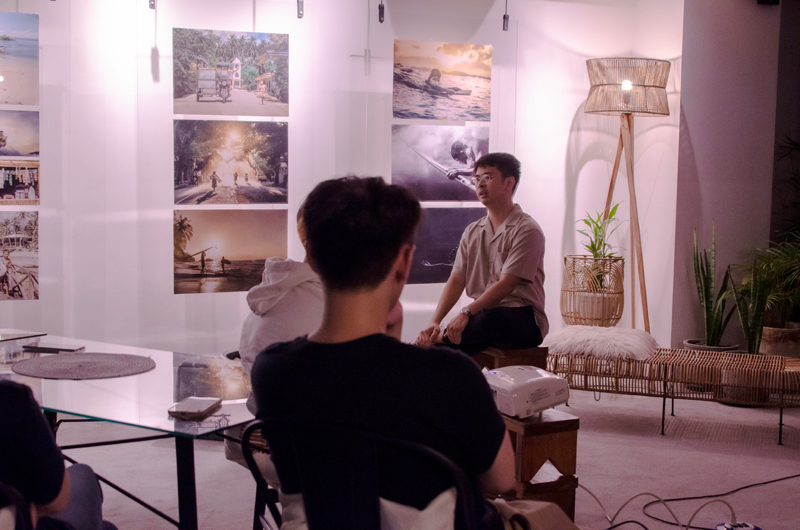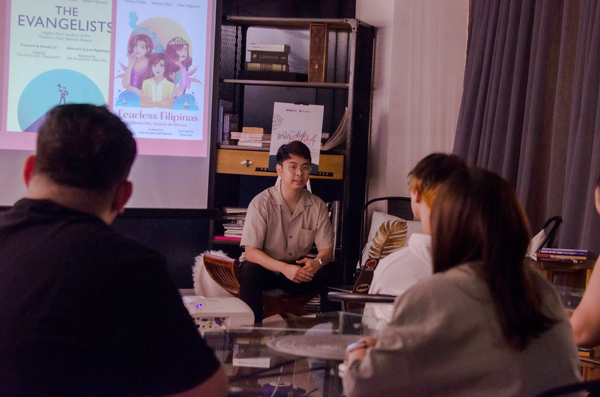With the hustle and bustle filling the avenues of Makati, it’s not wrong to assume that the city is a concrete corporate jungle. From high-rise buildings to industrialized stores, Makati is built on corporate ladders and elevator pitches. But explore a bit more and to the east side you’ll find Poblacion, a lively and hip contrast to what’s otherwise a commercial work mill for many.
While the fun and drinks happen at night, The Astbury–a third space for creative human experiences stands in one of Poblacion’s nooks and crannies. There, an intimate and immersive book club called “The Write Side of Bookshelf” gathered to converse and breathe new ideas on how to be a Filipino author and the future of Philippine literature last June 20. This session called “The Journey of a Filipino Writer” was led by author and longtime writer Pancho Dizon, and is just the first of many book club sessions to inject creativity and build a new community at the heart of the Metro.
The gap in representation
Perhaps the most compelling issue in modern Philippine literature is still the gap in representation. Although the country has a range of literary works, there’s still a need for more representation and depth in the books local publishers churn out.
For Bookshelf PH, a digital publishing house born at the height of the pandemic, the gap was found in the lack of books that paint the Philippine business landscape and sharing local stories of business leaders. This need was only amplified when people started searching for side hustles and business ventures to cope at that time. Thus, Bookshelf PH started publishing business books like The 50, which featured 50 HR leaders around the country to share their experiences working in different industries.
“Interviewing these leaders over Zoom calls was a great opportunity for writers like myself to dig deeper into stories often overlooked,” Dizon said. “You’d be surprised how easy it is to talk to these leaders by simply asking them over an email or messaging them on social media.”
Another issue in representation is found in many Filipino readers’ patronage of Western literary works over local books, especially for teens and young adults. Fantasy, sci-fi and other young adult Western novels with fandoms and following tend to take center stage in many local bookstores and online reading platforms.
“When you see the youth reading more Western literature, it actually signals a need for more Filipino representation and local books that can narrate stories as grappling as theirs. We have no shortage of inspiring stories, but we really have to search for them and dig deeper.”, Dizon explained.
The best language for local content
When it comes to language, the Philippines has almost 200 different dialects. Filipino readers and authors alike would often postulate on which language should be used in writing modern Filipino literature. One would argue that the rising use of English in many Filipino literary pieces snatches away the Filipino-ness of these works and dilutes the essence of using our Filipino language to enrich our literature.
But for Monette Quiogue, founder and managing partner of Bookshelf PH, language is simply a tool to use in conveying what truly creates the Filipino-ness in a literary work–the message.
“I believe that the message we communicate to our readers is the essence of Philippine literature,” Quiogue explained. “Language should never be a barrier in enriching local literary works. But choosing which language to use, whether that’s English, Filipino or Ilocano, matters most depending on which audience you’d like to get your message across.”
Bookshelf PH’s wide collection of books are mostly written in English. From business books painting the Philippine business landscape to women’s books narrating stories of prominent Filipina figures, the preference for English over Filipino in writing these modern books have a much deeper purpose behind it.
“We choose to write most of our books in English simply because we want to share our local content to a global audience. From the outside looking in, we want other cultures and nationalities to appreciate Philippine literature and reach a wider audience to inspire and share our local stories with,” Quiogue added.
The deeper purpose for writing local stories
After writing so many articles and books, one would ask what’s the deeper purpose to continue honing their craft in storytelling. For Dizon, his passion for writing stems from the people he has encountered and worked with in his story developments.
Fearless Filipinas 2, an anthology featuring 24 inspiring Filipinas who made a big impact in their fields, was an avenue for Dizon to create a spotlight for the Philippine women’s football team. By interviewing and featuring international footballer Cam Rodriguez in the book, Dizon had the opportunity to sit on the bleachers of Rizal Memorial Stadium to watch the team win the AFF Championships last year.
“Moments like the women’s football team winning the championship inspire me to write stories that are often found on the sidelines,” Dizon said. “There’s a lot of work to be done, but telling our own stories lets us take control of the narrative and for once, put a spotlight on us Filipinos.”
Join the next literary movement, intimate conversations, and creative exchange at the Astbury on July 12, Wednesday, 6-8 pm featuring The Write Side of Bookshelf’s latest guest speaker Merlee Jayme, author of Chairmom.
To reserve a spot and learn more about this creative get-together and future events, sign up here (https://docs.google.com/forms/d/e/1FAIpQLSczCGsjYg1tqOTMZsk3CZtP2RMTGAIVp9sz0xcUVJc44sDp0w/viewform) – limited slots only!
Liked this post? Follow SwirlingOverCoffee on Facebook, YouTube, and Instagram.



